Hmmm. There are lies, damn lies ...and statistics.
What the average person earns in different countries around the world
Typical salaries across the globe in 2025
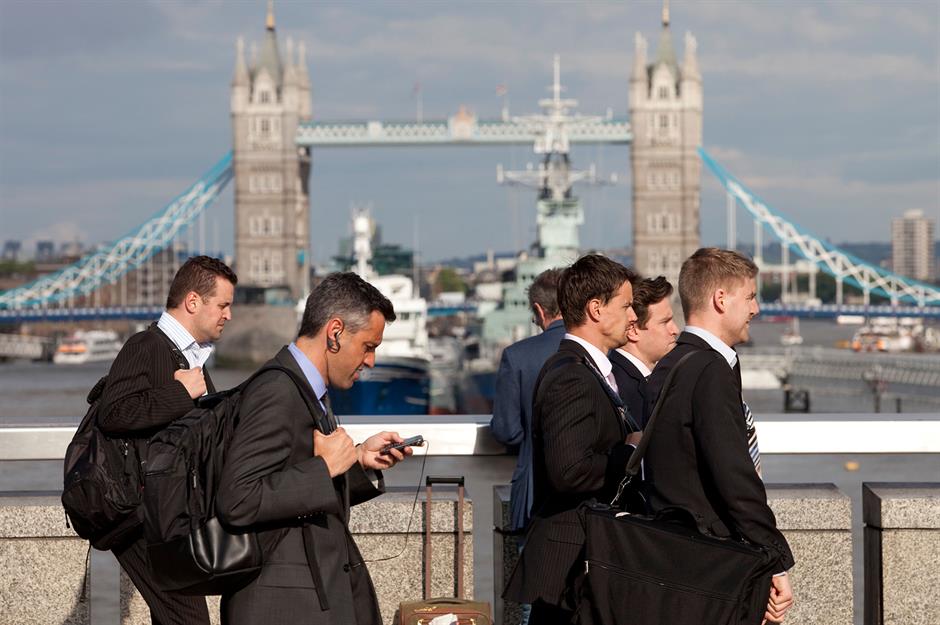
Ever wondered if you earn more or less than people in other countries? In recent years, rampant inflation and muted GDP growth have led to the 21st century's first decline in real wage growth on a global level, according to the International Labour Organization (ILO). But what’s happening as we enter 2025?
As salaries struggle to keep pace with rising prices, read on to discover the average yearly salary (after tax) for workers in 42 major nations around the world, with figures based on data collated by Numbeo, the world's largest cost of living database.
All dollar amounts in US dollars unless otherwise stated. Data correct as of January 2025.
Indonesia's average annual salary after tax: $3,780 (£3,090)

In a bid to improve living standards and reduce poverty, the Indonesian government is increasing the country’s average minimum wage for 2025 by 6.5%. However, earnings across the country are still extremely low by international standards, and trade unions and some opposition politicians want significantly more. Indonesia's average annual salary at the start of the year is just $3,780 (£3,090) according to Numbeo.
Low wage levels in the vast archipelago are due to a number of factors, ranging from its relatively affordable cost of living to its large cohort of unskilled workers and huge informal labour market.
Kenya's average annual salary after tax: $4,327 (£3,538)

As is the case in many countries, an inflation-driven cost of living crisis is gripping Kenya tightly. While the government has introduced minimum wage hikes, typical pay remains low, particularly in the agricultural sector.
Plans for tax hikes were shelved last year amid widespread public anger that claimed over 20 lives and injured hundreds more. President William Ruto has since signed them into law. The money’s desperately needed to cope with the economic shocks of COVID-19, the effect of Russia’s invasion of Ukraine – and an increasingly burdensome national debt.
Colombia's average annual salary after tax: $4,330 (£3,540)

Income inequality is rife in Latin America. In Colombia, the richest 10% own almost three-quarters of the nation's wealth, while the majority of people, especially the rural population, earn comparatively little. Over 60% of the workforce is engaged in the low-wage informal economy.
Numbeo says the average net salary as we begin the year is just $4,330 (£3,540). However, that’s likely to rise after President Gustavo Petro decreed a hike of over 9.5% in the 2025 minimum wage, which will now become at least $3,887 (£3,135) before tax. The president imposed the new safety net after failing to reach agreement with businesses and unions over its level.
Philippines’ average annual salary after tax: $4,605 (£3,765)

The Philippines is classified as a lower-middle-income country and its economy has been resilient recently, with growth outperforming many other Asian countries and inflation easing. The cost of rice in particular is now rising far less steeply than it was a year ago, thanks to lower import tariffs on the staple. Some analysts believe this year could see the archipelago uprated to upper-middle-income status.
In the meantime, Numbeo values its average annual salary after tax at a very modest $4,605 (£3,765), though the purchasing power of this money within the local economy will be more than the numbers alone suggest.
Brazil's average annual salary after tax: $4,889 (£3,997)

The wide gap between rich and poor in Brazil has long existed, and the country's average salary belies an income inequality that torments South America's largest nation. Things did look more promising for a while; following his election in 2022, President Luiz Inácio Lula da Silva said he wanted to boost disposable incomes to stimulate growth. And both wages and GDP have indeed grown. Now though, uncertainty surrounds the economy.
Chief among Brazil’s troubles is the Brazilian real, which was one of the worst-performing currencies against the US dollar last year, losing a fifth of its value. To repair the damage, the government needs to convince investors it’s getting debt under control, and to that end Lula da Silva now wants to trim over $11 billion (£9bn) from state budgets, in part by limiting rises in welfare and the minimum wage.
Peru’s average annual salary after tax: $5,091 (£4,162)

Peru was in recession as recently as 2023 but is now recovering, and President Dina Boluarte has increased the minimum wage by some 10% – the first such raise since 2022. It will now be the equivalent of around $300 (£245) a month. Night shift workers and those in agriculture and mining will receive more.
Peru ended 2024 with inflation of around 2%, so the increase will likely be felt. Analysts say the Andean country has a story of economic resilience, signalling stability and good monetary policy. Still, Peru has a long way to go. Poverty has fallen significantly, but it still affects some 30% of the population and almost twice as many in rural areas.
Vietnam's average annual salary after tax: $5,283 (£4,319)

With falling unemployment and region-leading economic growth, Vietnam’s average pay surged upwards by no less than 8.6% in 2024, according to the government’s General Statistics Office. That figure does hide some disparities though; men got paid around a third more than women, while urban dwellers earned over 38% more than their country cousins.
Vietnam has ambitious long-term goals to grow its economy by a 10th every year, aiming to become a high-income nation as soon as 2045.
Argentina's average annual salary after tax: $6,396 (£5,229)

Argentina has experienced the world's highest inflation rate, with the figure hitting almost 300% last April. Thanks to the radical austerity programme of President Javier Milei, it’s now reduced by almost half, whilst the country’s fiscal deficit and recession have also ended.
Despite the macroeconomic success, many individuals remain mired in poverty. The official poverty rate rose to 53% in the first half of last year – the nation's highest level in two decades. The Buenos Aires Times reports that it’s now fallen, but even the most optimistic estimates still put it at around 36%. The minimum wage will increase by less than 10% in 2025, far short of what's needed to keep pace with the price rises that have been plaguing the nation.
Russia's average annual salary after tax: $6,410 (£5,240)
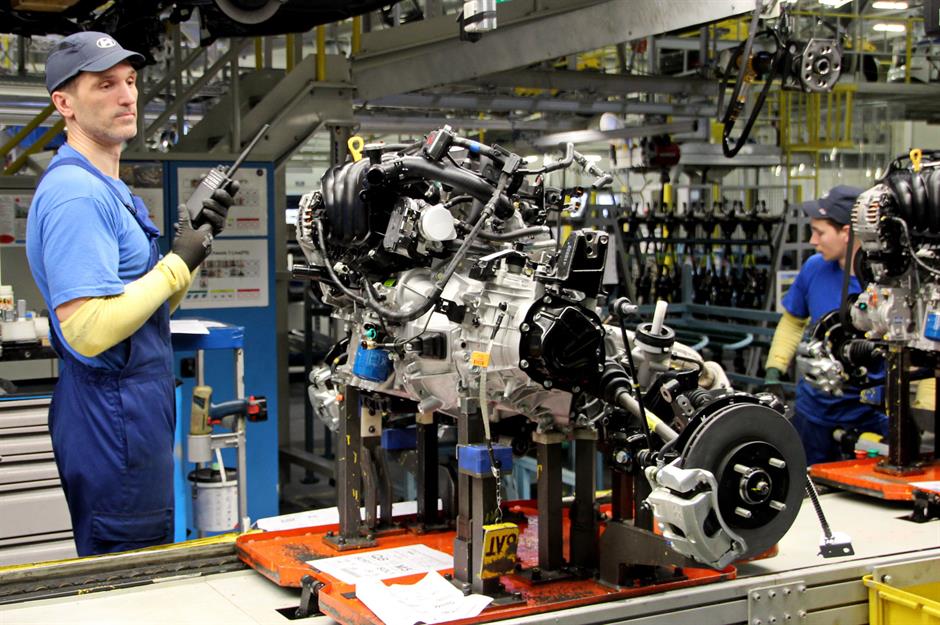
Russia is a highly unequal country where much of the wealth is concentrated in the hands of the few – oligarchs and the political elite – while ordinary citizens endure high levels of grinding poverty.
Wages have risen across a number of industries since President Putin invaded Ukraine in 2022, defying expectations of an economic crash due to Western sanctions. However, all’s not well, especially for those working outside the war economy. Most notably, the country is experiencing steep inflation, which the central bank is trying to tame with sky-high interest rates.
India's average annual salary after tax: $6,966 (£5,695)
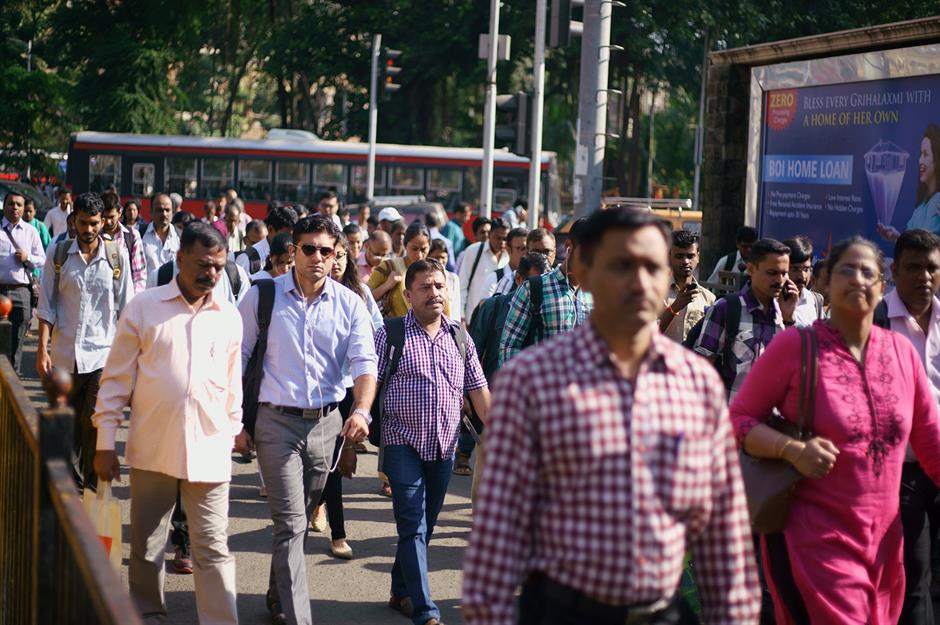
Despite being the world’s fastest-growing major economy, India has nevertheless seen real wages decline in recent years, with inflation – especially in food prices – one of the main culprits. Inflation has eased a little, but the sub-continent’s extreme income inequality still means that hundreds of millions are left in poverty.
India’s economy includes a burgeoning corporate sector, but the formal labour force only accounts for around a fifth of all employment. A recent minimum wage hike in the country targeted workers in various informal sectors, including construction, housekeeping and agriculture.
Thailand's average annual salary after tax: $7,177 (£5,867)
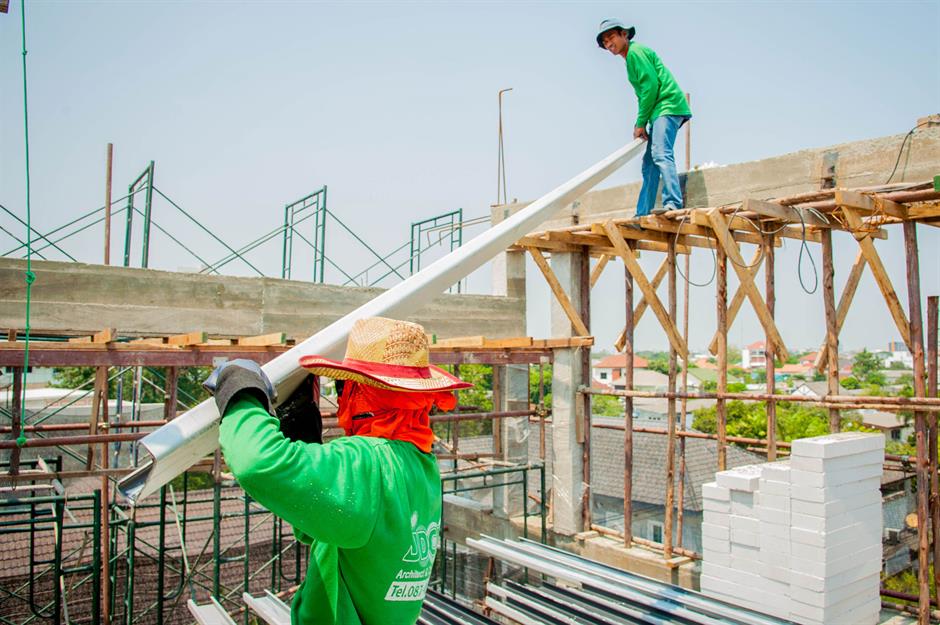
Income inequality is stark in Thailand, with Credit Suisse declaring in 2018 that it was the most economically unequal country in the world. Though the gap between rich and poor has narrowed since then, it still remains vast. Lawmakers are reluctant to increase the minimum wage significantly for fear of discouraging foreign direct investment,
Research by Thai bank SCB suggests that almost two-thirds of consumers expect tougher economic conditions this year, with low-income groups especially pessimistic. High household debt is one of the particular concerns, as are possible US tariffs, which could hit the revenues of manufacturers based in the Kingdom.
Chile’s average annual salary after tax: $7,898 (£6,457)

As a poster child for South American economic progress, Chile’s average salary is higher than any other on the continent bar Uruguay. By law, the minimum wage is revised each January and tied to the rate of consumer inflation in the previous six months. That said, there are challenges for the nation’s employees.
Inflation is easing, but at over 4% it’s still way ahead of the central bank’s target, and that puts real incomes under strain. Meanwhile, electricity tariffs have risen, and the Peso has fallen against the dollar, putting further strain on prices. The central bank has recently cut interest rates to try and make things easier. But – noting the persistence of inflation – it might not do so again for a while.
Mexico's average annual salary after tax: $7,914 (£6,470)
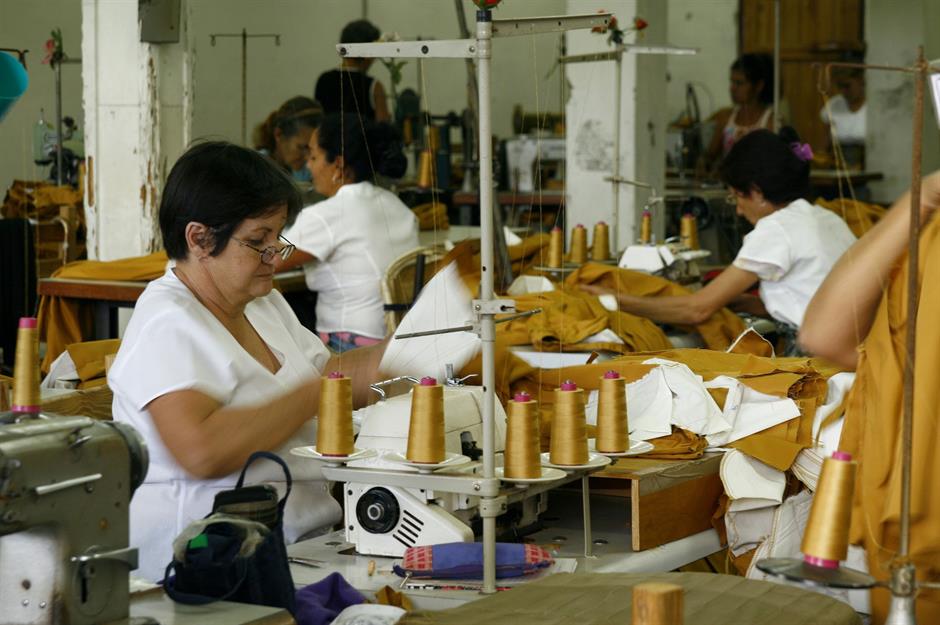
The Mexican government has been busy hiking minimum wages as inflation erodes incomes in the country. Despite that, the nation provides generally low wages for its workers and remains one of the most economically unequal in the world. For example, factory employees earn three times less than their counterparts in China.
There are, in fact, two rates of minimum wage across the nation: a general rate and another slightly higher one for the northern area bordering the United States. This year, they've increased by 11.99% and 12% respectively. But Mexicans can still typically earn six times more by entering the US and working there.
Türkiye's average annual salary after tax: $8,380 (£6,851)

Having been exacerbated by President Erdoğan's unorthodox economic policies, Türkiye's inflation rate is falling as the leader changes course – although at around 44% as the year began, the situation remains dire. In December, the government introduced a 30% increase to the minimum wage. Critics say that will stoke inflation. And unions aren’t happy either, as they had called for some 74% more.
Admittedly, average Turkish earnings remain low by global standards, with millions of workers forced to tighten their belts to get by. That hasn't stopped Erdoğan from seeking a 30% increase to his own salary in 2025.
Malaysia's average annual salary after tax: $10,906 (£8,916)
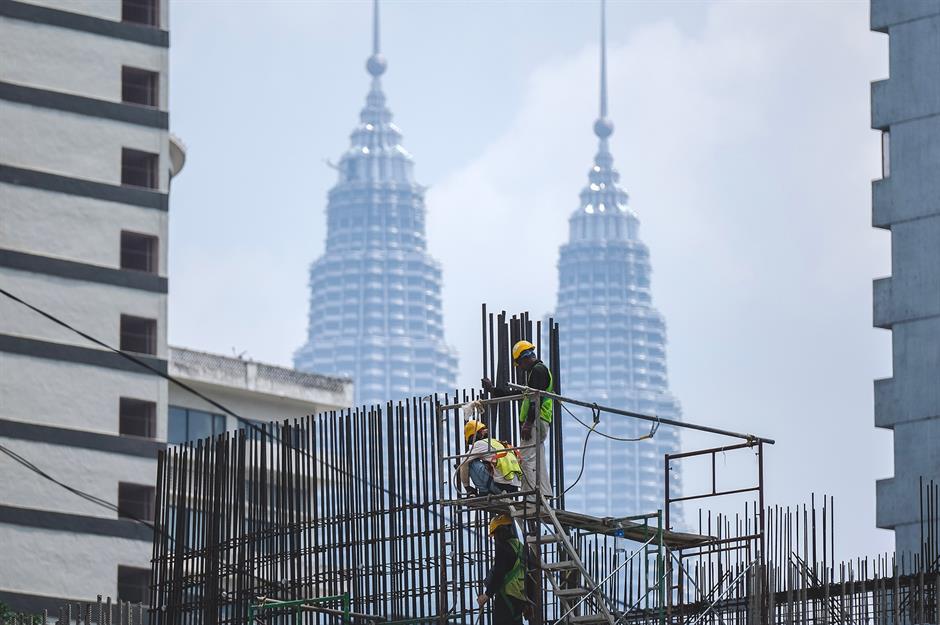
The IMF notes that Malaysia’s economy had a good 2024, with easing inflation. That said, wages are still playing catch up. The number of people that fall into the country's middle-class M40 bracket has been declining, while pockets of hardcore poverty stubbornly persist. Conversely, Malaysia's rich have been getting richer.
The government is taking action. From February, the minimum monthly wage will apply to all firms that employ more than five people. In August, it will be expanded to cover all employers, regardless of the number of staff.
China's average annual salary after tax: $11,189 (£9,147)

Gone are the days when China was a low-cost labour country, with the likes of India, Vietnam and Mexico now taking its place instead. This has been one factor behind moves by Western companies to relocate their manufacturing supply chains elsewhere. That said, with GDP growth slowing, average salaries in the People's Republic are rising at their weakest pace in over a decade, according to a report from Caixin Global.
One way the government has responded is by making a surprise hike in public sector pay, perhaps hoping to inject some consumer cash into the economy. As the year began, millions of civil servants and other government employees shared a total of up to $20 billion (£16bn). As for minimum wages, they're set by local governments and vary according to each region’s development and cost of living. Shanghai currently has the highest monthly minimum wage at around $370 (£302).
Greece's average annual salary after tax: $11,880 (£9,712)

According to EU data crunchers Eurostat, Greece has the third lowest average earnings in the 27-member bloc, with only Hungary and Bulgaria performing worse. What’s more, with full-time wages under 45% of the EU-wide average, the gap with the rest of Europe is widening.
The Greek economy is working hard to turn the corner from the severe debt crisis it suffered after 2008, so it’s perhaps not surprising that earnings remain disappointing. Prime Minister Kyriakos Mitsotakis has raised the monthly minimum wage but has admitted that pay in the country is still lower than it should be. To address the issue further, the country is poised to introduce a series of incremental boosts in the coming years, which would see the minimum wage grow 46% by 2027.
South Africa's average annual salary after tax: $15,517 (£12,686)

Despite boasting one of the most progressive constitutions in the world, South Africa is officially the most economically unequal country. Its Gini coefficient – where 0 is total equality and 1 is total inequality – measures 0.63, and more than 80% of the nation's wealth is owned by just 10% of the population.
Although apartheid ended over 30 years ago, the average white South African still earns three times more than the average Black South African. The gender pay gap is also huge, with female South Africans typically earning 30% less than men. The country's hourly minimum wage for 2024/5 was upped by 8.5%, but the average salary increases in the country in recent years have been well below inflation.
Poland's average annual salary after tax: $17,195 (£14,058)
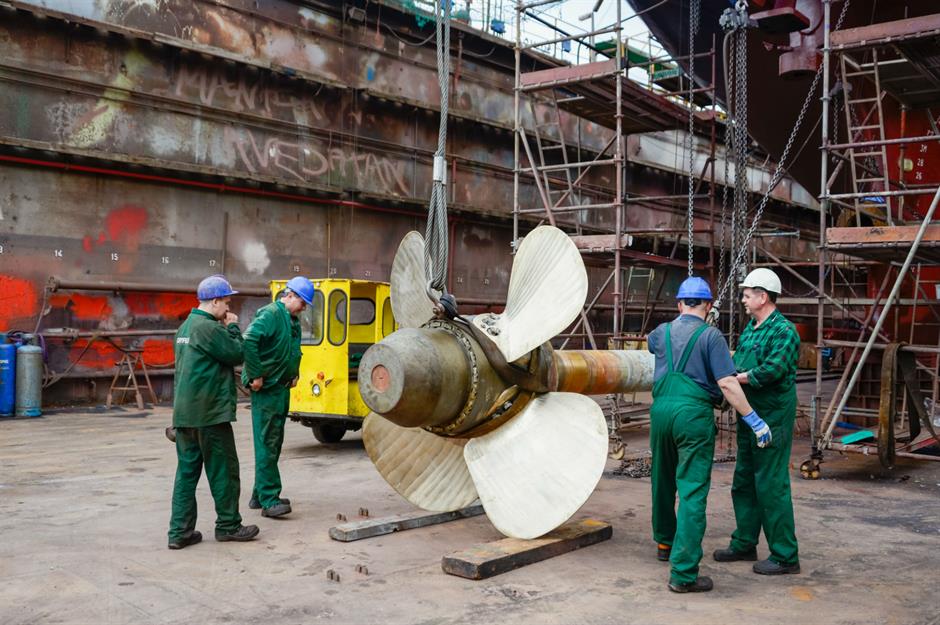
It's official: Poland is no longer a low-wage country. Salaries in the Eastern European nation have grown significantly in recent years, most notably between 2015 and 2019. Even those on the minimum wage have something to shout about: as of this year, their hourly earnings are equivalent to $7.35 (£6.01) per hour – overtaking the US federal safety net of $7.25 (£5.93) which was last increased in 2009.
Impressive real wage growth is expected to continue despite Poland’s inflation remaining among the highest in the EU. The hike in minimum pay will come with a hefty price tag though, costing companies billions of zloty.
Italy's average annual salary after tax: $19,957 (£16,316)
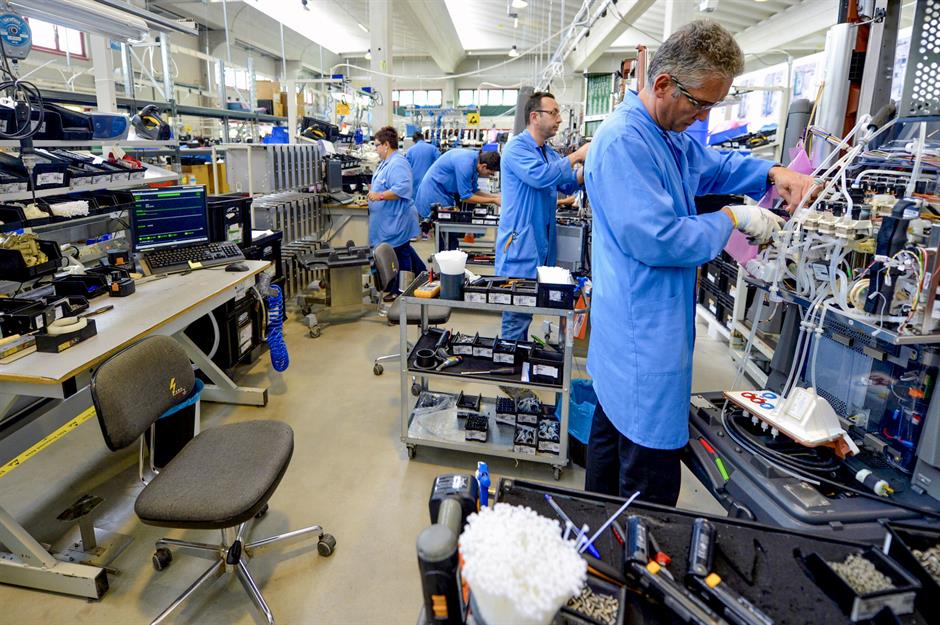
In contrast to Poland, real wage growth has stagnated in Italy. According to the OECD, average full-time real wages barely grew between 1990 and 2021. This dire performance prompted the then-governor of the Bank of Italy, Ignazio Visco, to advocate for the introduction of a statutory minimum wage, a move that's since been scuppered by Prime Minister Giorgia Meloni's government.
Part of the reluctance to legislate is down to the Italian constitution, which forbids collective bargaining to be regulated by law or decree. Instead, wage levels are generally set by collective agreements for each sector of the economy. Pay tends to be higher in Italy’s more industrialised north than its poorer south.
Spain's average annual salary after tax: $21,502 (£17,579)

Like other countries across southern Europe, Spain’s been grappling with low real wage growth for years. The situation came to a head in 2022 as galloping inflation severely eroded real pay. A report from the OECD revealed that purchasing power fell by a taxing 5.3% in 2022.
The situation might now be easing a little with average earnings showing an increase of around 4% last year. The government of Pedro Sánchez plans to increase the country’s minimum wage by a similar amount in 2025. Taxes will also rise for some of the wealthiest employees, to help fund pensions for the baby boomer generation.
Japan's average annual salary after tax: $24,364 (£19,919)
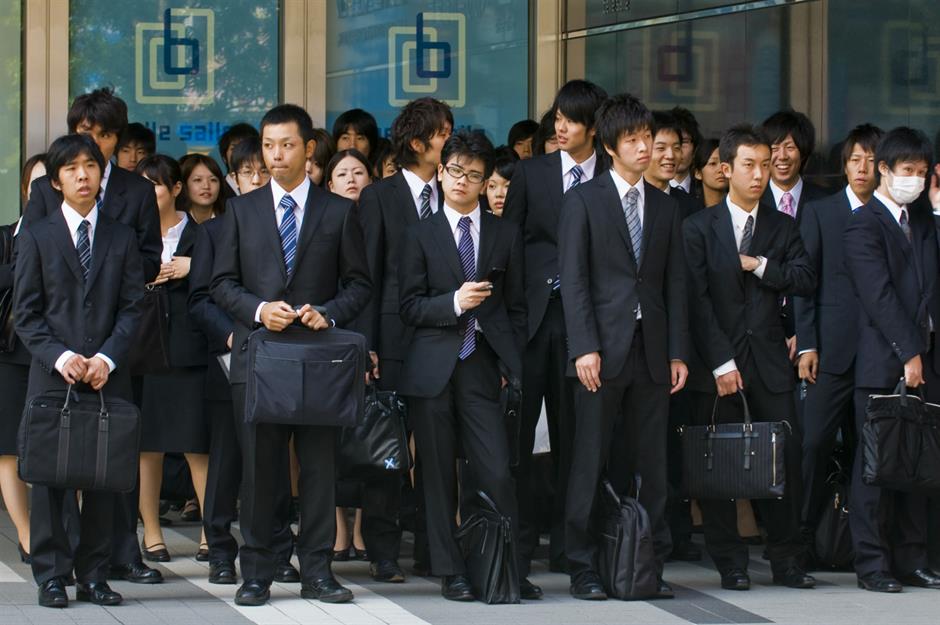
Real wage growth in Japan has more or less stalled since the so-called 'Lost Decade' of the 1990s, with persistently low GDP growth affecting the country's economy. Back in 1990, average pay in Japan was similar to that of Germany and Australia, but it's lagged behind since. Things might finally be changing though.
Last year, wages rose at their fastest pace in 30+ years, and the country’s Economy Minister, Yoji Muto, has implored business leaders to continue this momentum in the hope that it’ll boost the economy. Happily for him, analysts expect the gradual recovery in pay and household consumption will continue.
South Korea's average annual salary after tax: $26,317 (£21,515)

South Korean long-term wage growth is impressive. Private gross disposable income (PGDI) – a measure of net household income – increased by an astonishing 8% in every one of the past 50 years. According to the Korea Enterprises Foundation, South Korea’s average monthly pay even surpassed Japan’s in 2022. Its minimum wage has since risen by just over 1.7%, making it slightly higher than Tokyo’s too.
All is not perfect in the East Asian country though, notwithstanding its current political crisis. Its gender pay gap remains the worst in the OECD for a start. Secondly, PGDI has been outpaced by gross national income. In other words, growth in disposable incomes has not kept up with the growth in national economic development.
Saudi Arabia's average annual salary after tax: $26,952 (£22,034)

Saudi Arabia's employment market is booming as the nation implements Vision 2030, the government's grand plan to diversify the country's economy and reduce its reliance on oil.
Wages are on the rise, with the highest-paid jobs found in the construction and property sectors. However, income inequality is still pronounced, and the country's gender pay gap is one of the largest in the world.
France's average annual salary after tax: $29,176 (£23,853)

According to Le Monde, French wages over the last three years have increased by 11%, but over that time household costs have gone up by 2% more. The same newspaper has reported that more than 17% of workers are stuck on the minimum wage, compared to 12% three years ago, though it’s worth noting that minimum pay in France is relatively generous.
The year ahead might see some improvement. According to government statistics, inflation fell in 2024 and now stands at 1.6%, which is much less than its recent high of 5.2% in 2022. With price increases easing, real pay for everyone should be on the rise again. Then again, France faces a reckoning on its high government debt, so macroeconomic turmoil might be the next drag on earnings.
Austria's average annual salary after tax: $30,000 (£24,526)
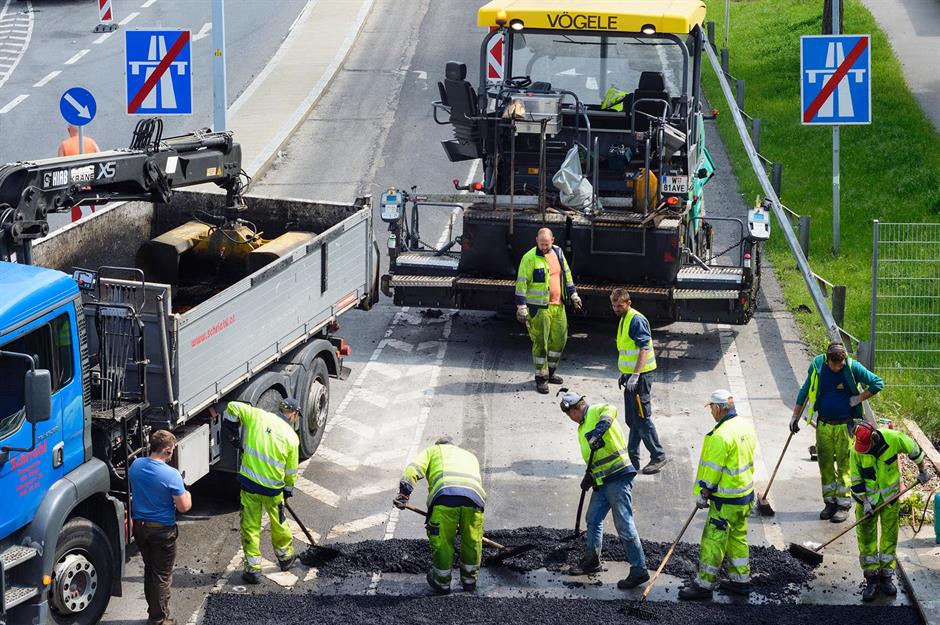
While a minimum wage is not enshrined in Austrian law, workers are still protected. In recent years, collective bargaining agreements between employers and employees set a base rate which can differ by sector. Paying beneath this rate can result in heavy fines. For example, a collective agreement for the hotel and restaurant industry set a minimum monthly wage of $2,155 (£1,663) in May last year.
However, Austria is not immune to inflation. Its consumer price index rose slightly to hit 2% year on year to December, and a year before it was almost three times higher.
Belgium’s average annual salary after tax: $30,068 (£24,582)

Last April’s rise in the Belgian minimum wage brought it to over €2,000 ($2,053/£1,678) per month, putting it into the European Union’s five highest rates. It’s scheduled to rise again in 2026. Average gross salaries are also in top five territory. Many are governed by an indexation system in which whole sectors receive automatic pay increases linked to inflation. More than half a million private sector workers enjoyed a 3.58% rise at the start of this year.
On the face of it, then, Belgium looks like a great place to be an employee. On the other hand, it’s among the highest taxed countries in the OECD, with income tax rates of up to 50% depending on the amount you earn.
Sweden's average annual salary after tax: $32,548 (£26,609)

Sweden is another country with no nationally implemented minimum wage. Instead, it has strong labour force protection through the so-called Nordic Model, in which each sector of industry agrees its own base pay levels. Nearly all Swedish employees belong to one of the country’s 110 trade unions and employers’ organisations, who negotiate the rates between them.
The system results in relatively little income inequality and salaries tend to be generous, reflecting Sweden’s high standard of living. There’s a cost to it all though: one of the world’s highest rates of personal income tax, at up to 52.3%, which brings the net level down quite a bit.
Canada's average annual salary after tax: $32,869 (£26,872)

Inflation is easing in Canada, which must be a relief after it led to a 3.4% drop in real pay as recently as 2022. However, it seems many Canadians are yet to feel the benefit. A survey by credit monitoring service Transunion in January found two-thirds of them feel their incomes have stagnated, with half saying they don’t expect things to improve quickly. Cost of living issues helped lead to the downfall of longstanding prime minister, Justin Trudeau.
For those at the lower end of the pay scale, the federal minimum wage rose by 3.9% last April, but that reflects price rises that already took place in 2023. Jobs to which the federal safety net does not apply are governed by separate provincial minimums, which can vary considerably. Economists say it's still unclear if and when Canadians will regain the purchasing power they've lost in recent years.
New Zealand's average annual salary after tax: $34,877 (£28,513)
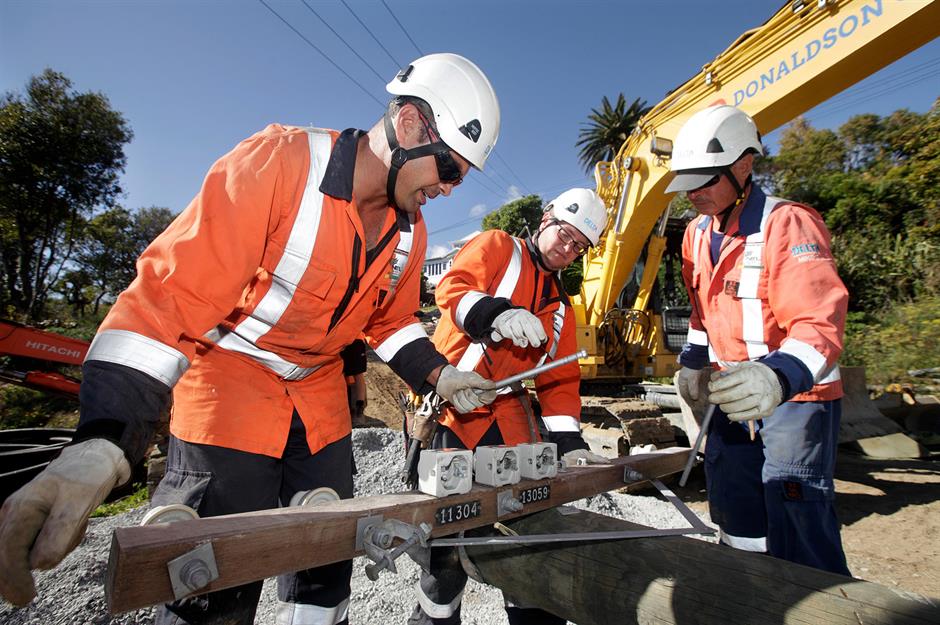
Still dealing with recessionary conditions, New Zealand’s employers are increasingly looking to cut costs. At the same time, inflation has eased markedly, and the country’s had a record influx of migrant labour, meaning more competition for jobs, especially in entry-level and semi-skilled roles.
All this adds up to the potential for wages to moderate this year. However, as of the third quarter of 2024, salaries were reported as still outperforming the 2.2% inflation rate. It’s a different matter for those on the minimum wage, which will increase by only 1.5% in April – a move that’s angered trade unions and opposition politicians.
Germany's average annual salary after tax: $35,032 (£28,640)
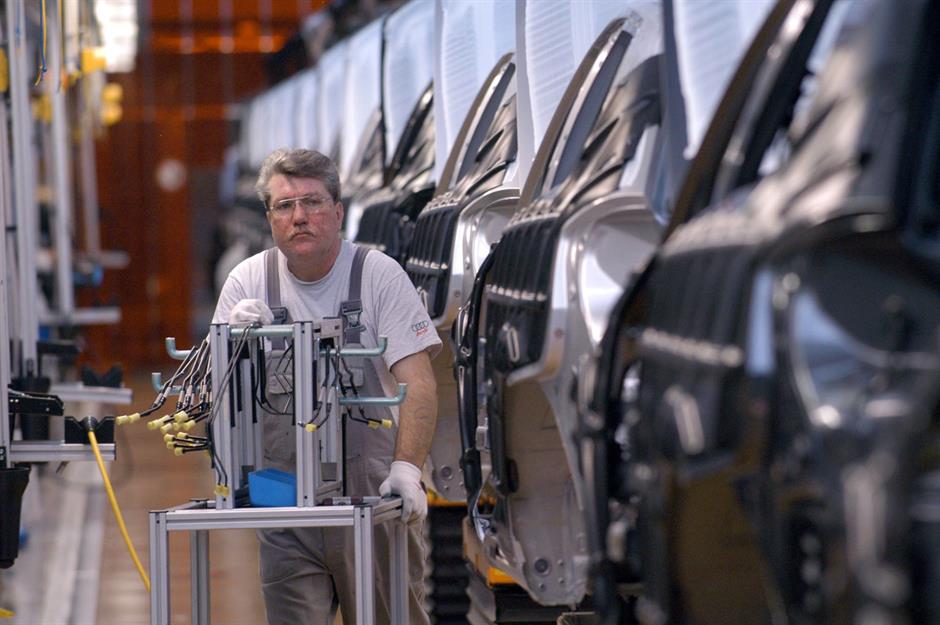
The average salary in Europe’s biggest economy is one of the continent’s highest. However, current economic weakness means the Bundesbank expects wage growth to be suppressed in future. Combine that with taxes higher than the OECD average, and the outlook for real incomes doesn’t look so good.
Change could be afoot after the elections scheduled for February. The opposition CDU/CSU wants to cut income tax for low and middle earners, reduce social security contributions and abolish the tax surcharge known as the Soli, introduced in the 1990s to help pay for reunification. That could put more euros in German pockets, though the parties haven’t yet said how they’ll fund the proposed relief.
UK's average annual salary after tax: $35,714 (£29,198)
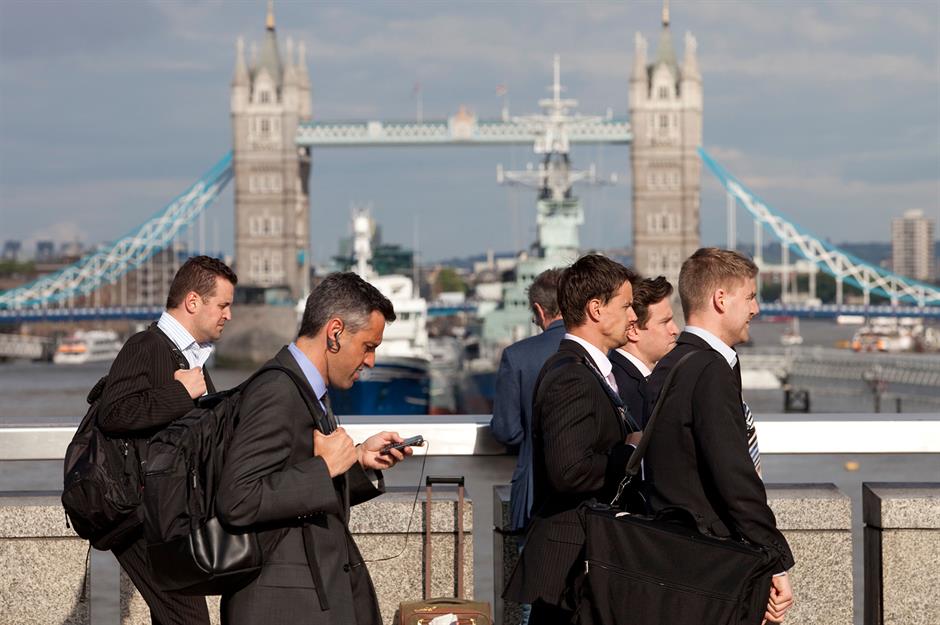
The UK's inflation rate has remained stubbornly above target for years now, significantly impacting real incomes, but the most recent figures show wages outpacing it with an annualised rise of 5.2% in Autumn last year. The national minimum wage has also risen significantly, while some public sector workers have been awarded increases of up to 22% to end strike action.
If that all sounds a bit too good to be true – it quite possibly is. The economy took a turn for the worse last July, and it’s still flatlining. Thanks to that, as well as recent hikes in the social insurance payments employers make for each member of staff, private-sector hiring has stalled. Meanwhile, inflation is still high enough to make its presence felt. It seems 2025 is shaping up to be a turbulent year.
Ireland's average annual salary after tax: $36,694 (£29,999)

Ireland's real wage growth between 1990 and 2021 was nothing short of phenomenal, with salaries rising by an incredible 90%. After 2021 however, real earnings faltered due to high inflation. Now, that pressure’s finally fallen back, and the outlook is once again positive.
The country's central bank expects real income growth per household to average 1.8% both this year and next, while wages should grow by at least 4% over the same period. The Emerald Isle might no longer be setting the world on fire, but it’s hoping for steady progress.
Norway's average annual salary after tax: $38,257 (£31,277)

Norway's average salary is one of the highest in the world, yet the country's real pay actually stagnated between 2015 and 2023 as inflation outstripped nominal wage growth. In some cases, real pay actually went down.
So what can Norwegians expect in 2025? Statistics Norway says the economy’s now picking up, profitability is returning to key industries and real income will grow as inflation and interest rates subside. It estimates that annual real wage growth will be around 1.5% a year until 2027.
United Arab Emirates’ average annual salary after tax: $40,015 (£32,714)

The United Arab Emirates (UAE) sources the majority of its workforce from overseas, with professionals from as far away as South America moving there to take up specialist jobs. It also levies no income tax on individuals. Small wonder that its average income is on the high side. Even so, the figures hide two counteracting variables.
Firstly, the sheer number of arrivals in the tiny state means competition can be tight in some sectors, encouraging applicants to accept lower pay than roles merit. Secondly, low-skilled migrant workers, who often take on roles in construction or domestic settings, enjoy little or no protection and can face exploitation. The UAE’s been considering a minimum wage and imposing penalties on employees who fail to pay workers on time. But for now the Gulf statelet remains very lightly regulated.
Netherlands' average annual salary after tax: $40,678 (£33,256)
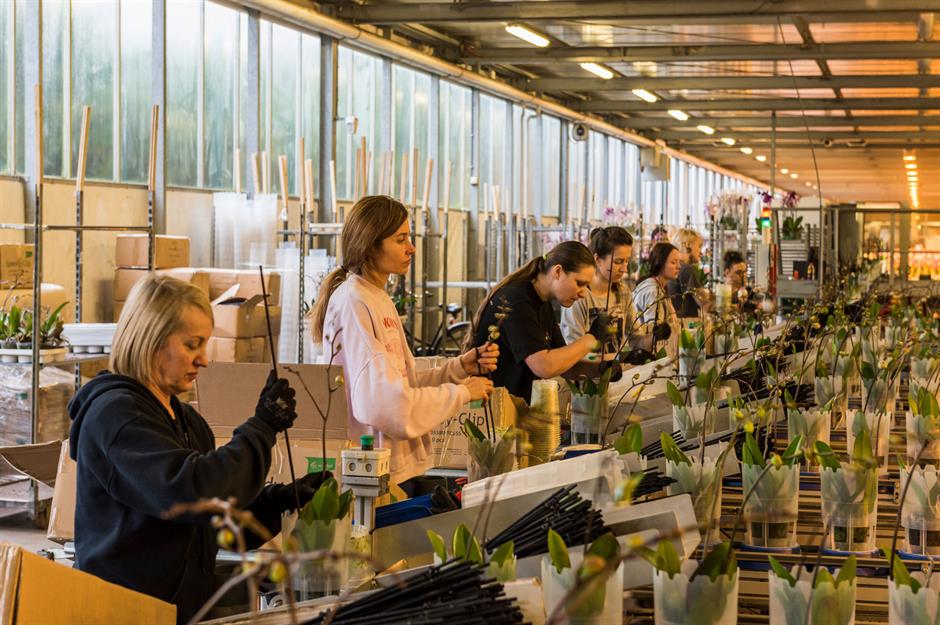
Dutch wages rose by an average of 6.6% in 2024, according to official figures. That’s the highest rise since 1982 and it means pay growth in the Netherlands is higher than the euro-area average. Inflation is also higher than average, but even once you take it into account, real incomes climbed by an estimated 2.6%.
With earnings outstripping inflation, household income is on the rise and domestic demand has become a key driver of economic growth. The Central Bank is cautiously optimistic about the rest of this year, predicting lower inflation, a modest rise in GDP and wages to rise again, though by 3.7% this time.
Australia's average annual salary after tax: $41,757 (£34,138)

Australia’s annual wage growth was less than 1% in the final quarter of 2024, according to the country’s Bureau of Statistics. Relatively low productivity, falling inflation and a slight rise in unemployment are inhibiting pay rises. Having said that, real earnings grew, outstripping the more modest consumer price rises throughout the year, and the central bank expects that situation to continue, at least until the middle of this year.
By then, Australians will have gone to the polls to decide if the beleaguered Labor government of Prime Minister Anthony Albanese should continue in office. It began life in 2022 amid the highest inflation for three decades which, at almost 8%, gobbled up all but the very biggest pay hikes.
Singapore's average annual salary after tax: $46,887 (£38,332)
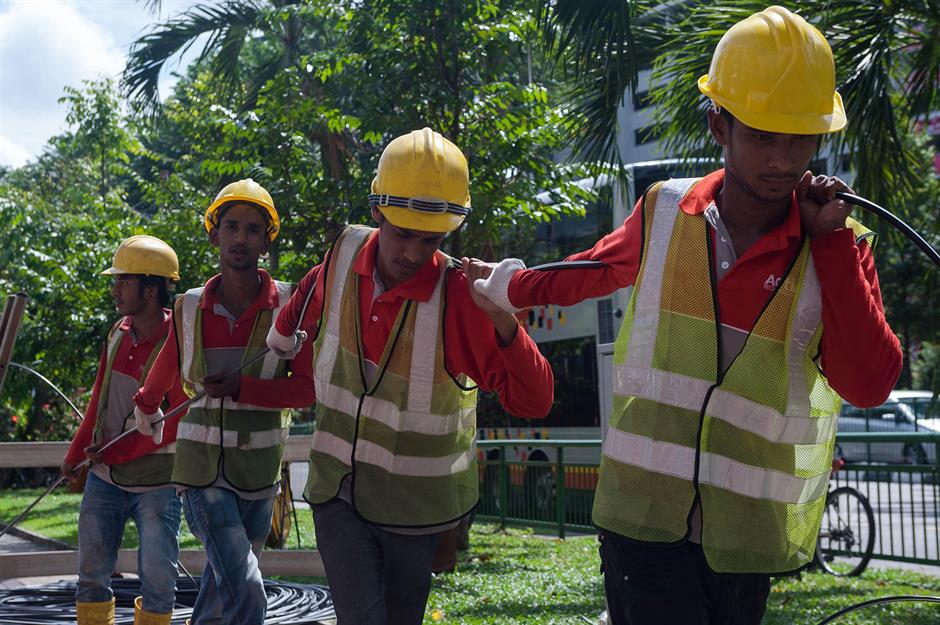
Singapore’s real income has been up and down like the city-state’s skyline recently. After a modest rise in 2022 it declined 2.2% the next year, but in 2024 it rebounded 3.4% as inflation eased. The picture for lower-paid workers was even better, with up to 4.6% real earnings growth, according to the Ministry of Manpower. Productivity gains and further progress on inflation will make 2025 another year of recovery.
While the economy is expected to grow much more modestly this year, hiring still seems strong and gross salaries could rise by as much as 5%, with professionals in the technology and healthcare sectors attracting even higher rises. One particularly acute problem in Singapore is the cost of accommodation, which the government is taking steps to address, especially for people with families.
Qatar's average annual salary after tax: $49,047 (£40,098)

The average salary in Qatar is high and compares favourably with living costs, which, according to Numbeo, are cheaper than in the UK and Germany. However, wealth inequality is stark, and the nation's migrant workforce is scandalously low-paid.
Nevertheless, the Qatari government has introduced labour reforms that are improving the plight of these long-exploited workers. These include a minimum wage and additional rights, although there's still much room for improvement.
USA's average annual salary after tax: $52,365 (£42,810)

The world’s biggest economy is doing better than many when it comes to real earnings growth. Reporting in the third quarter of last year, the Bureau of Labor found wages were 3.3% up on the year before, after accounting for inflation. The Treasury put this in a five-year context and declared that an average worker could therefore afford the same goods and services as they did in 2019, with an extra $1,600 (£1.3k) per year to spare.
Of course, the gap between rich and poor is wide in the US, and the high averages hide significant disparities within the workforce. In particular, the federal minimum wage has not increased since 2009, meaning that anyone earning it will have had real terms wage cuts ever since. However, many states have their own minimum wage levels, some of which are higher than the federal rate.
Luxembourg's average annual salary after tax: $68,337 (£55,868)

Luxembourg boasts the second-highest average salary in the world. The cost of living in this tiny, wealthy nation is exceptionally high, but a recent poll found almost two-thirds of respondents were happy with the government’s cost of living measures. These include wage indexation – an automatic nationwide pay rise if inflation is high enough.
With inflation below 1% in 2024 there was no indexation, so wage growth was modest at just 1.2%. However, this year could see a larger rise. Inflation is now predicted to nudge upwards thanks largely to a relaxation in maximum energy prices, so a new indexation in the spring is expected to boost salaries by up to 3%.
Switzerland's average annual salary after tax: $77,974 (£63,747)

The world’s highest average salary after deductions belongs to another small European country – Switzerland. The Alpine nation’s cost of living is extremely high, yet it’s still hard not to be impressed by an average take-home income that reaches $77,974 (£63,747), according to Numbeo.
Even so, Switzerland is not immune to the economic malaise afflicting some of its neighbours. International-facing sectors like manufacturing are suffering higher unemployment, which could rise to 3% by 2026, meaning wages will probably come under pressure. The KOF Swiss Economic Institute reports a likely average pay increase of 1.8% for this year, which would probably be only 1.3% after accounting for inflation.
Now discover the cost of running a mobile phone around the world
Comments
-
REPORT This comment has been reported.
-
-
 Doug1943
Doug1943
09 January 2019It would be interesting to know how this average was calculated. Is it a mean -- where if 4 people earn 5 pounds a month, and one more earns 20 000 pounds a month, the average wage (mean) will 4004 pounds. Better to tell us the median income -- that figure where half the population earn less and half earn more.
REPORT This comment has been reported.45
Do you want to comment on this article? You need to be signed in for this feature
27 January 2019